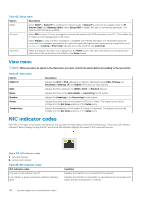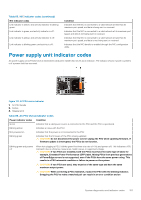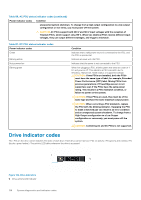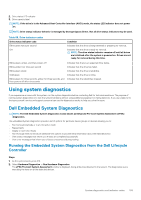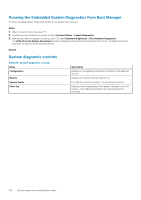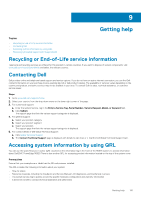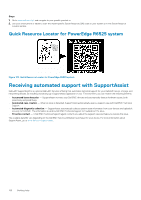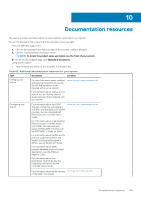Dell PowerEdge R6525 EMC Installation and Service Manual - Page 158
Drive indicator codes
 |
View all Dell PowerEdge R6525 manuals
Add to My Manuals
Save this manual to your list of manuals |
Page 158 highlights
Table 86. AC PSU status indicator codes (continued) Power indicator codes Condition unexpected system shutdown. To change from a high output configuration to a low output configuration or vice versa, you must power off the system. CAUTION: AC PSUs support both 240 V and 120 V input voltages with the exception of Titanium PSUs, which support only 240 V. When two identical PSUs receive different input voltages, they can output different wattages, and trigger a mismatch. Table 87. DC PSU status indicator codes Power indicator codes Green Blinking amber Not powered on Blinking green Condition Indicates that a valid power source is connected to the PSU, and the PSU is operational. Indicates an issue with the PSU. Indicates that the power is not connected to the PSU. When hot-plugging a PSU, it blinks green five times at a rate of 4 Hz and powers off. This indicates a PSU mismatch due to efficiency, feature set, health status, or supported voltage. CAUTION: If two PSUs are installed, both the PSUs must have the same type of label; for example, Extended Power Performance (EPP) label. Mixing PSUs from previous generations of PowerEdge servers is not supported, even if the PSUs have the same power rating. This results in a PSU mismatch condition, or failure to power on the system. CAUTION: If two PSUs are used, they must be of the same type and have the same maximum output power. CAUTION: When correcting a PSU mismatch, replace the PSU with the blinking indicator. Swapping the PSU to make a matched pair can result in an error condition and an unexpected system shutdown. To change from a High Output configuration to a Low Output configuration or conversely, you must power off the system. CAUTION: Combining AC and DC PSUs is not supported. Drive indicator codes The LEDs on the drive carrier indicates the state of each drive. Each drive carrier has two LEDs: an activity LED (green) and a status LED (bicolor, green/amber). The activity LED blinks whenever the drive is accessed. Figure 122. Drive indicators 1. Drive activity LED indicator 158 System diagnostics and indicator codes






